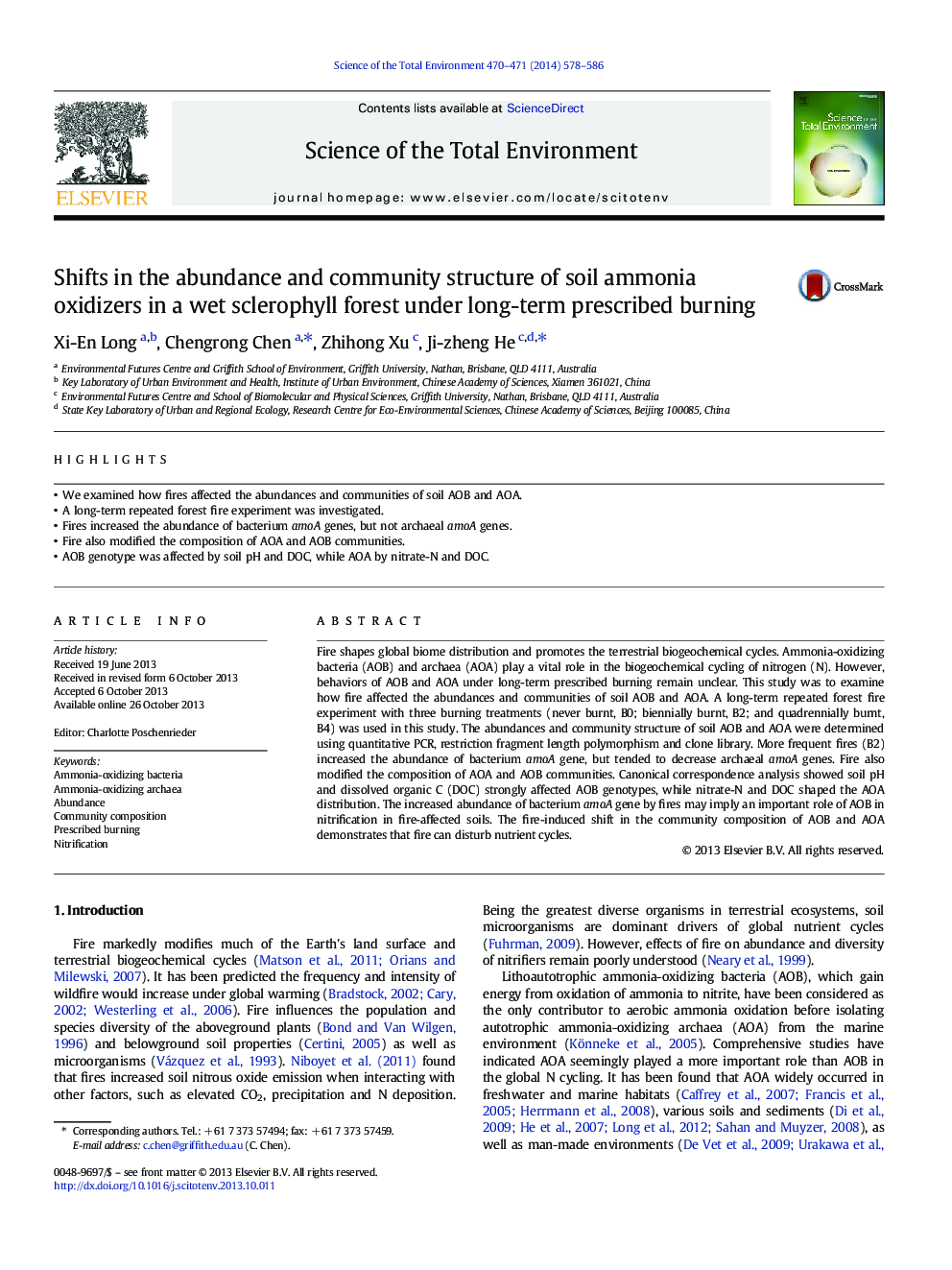| Article ID | Journal | Published Year | Pages | File Type |
|---|---|---|---|---|
| 6331440 | Science of The Total Environment | 2014 | 9 Pages |
Abstract
Fire shapes global biome distribution and promotes the terrestrial biogeochemical cycles. Ammonia-oxidizing bacteria (AOB) and archaea (AOA) play a vital role in the biogeochemical cycling of nitrogen (N). However, behaviors of AOB and AOA under long-term prescribed burning remain unclear. This study was to examine how fire affected the abundances and communities of soil AOB and AOA. A long-term repeated forest fire experiment with three burning treatments (never burnt, B0; biennially burnt, B2; and quadrennially burnt, B4) was used in this study. The abundances and community structure of soil AOB and AOA were determined using quantitative PCR, restriction fragment length polymorphism and clone library. More frequent fires (B2) increased the abundance of bacterium amoA gene, but tended to decrease archaeal amoA genes. Fire also modified the composition of AOA and AOB communities. Canonical correspondence analysis showed soil pH and dissolved organic C (DOC) strongly affected AOB genotypes, while nitrate-N and DOC shaped the AOA distribution. The increased abundance of bacterium amoA gene by fires may imply an important role of AOB in nitrification in fire-affected soils. The fire-induced shift in the community composition of AOB and AOA demonstrates that fire can disturb nutrient cycles.
Keywords
Related Topics
Life Sciences
Environmental Science
Environmental Chemistry
Authors
Xi-En Long, Chengrong Chen, Zhihong Xu, Ji-zheng He,
